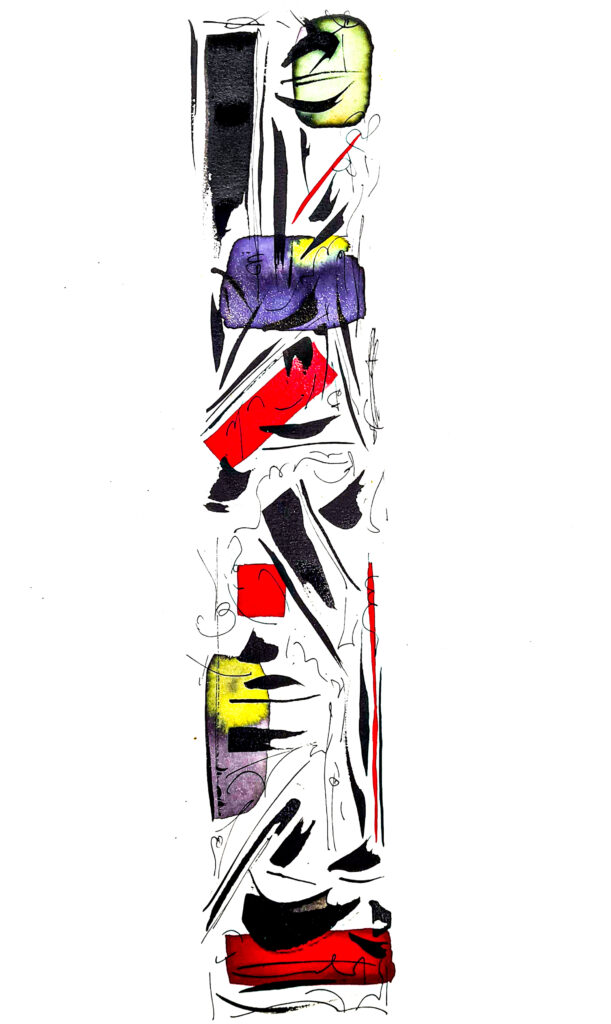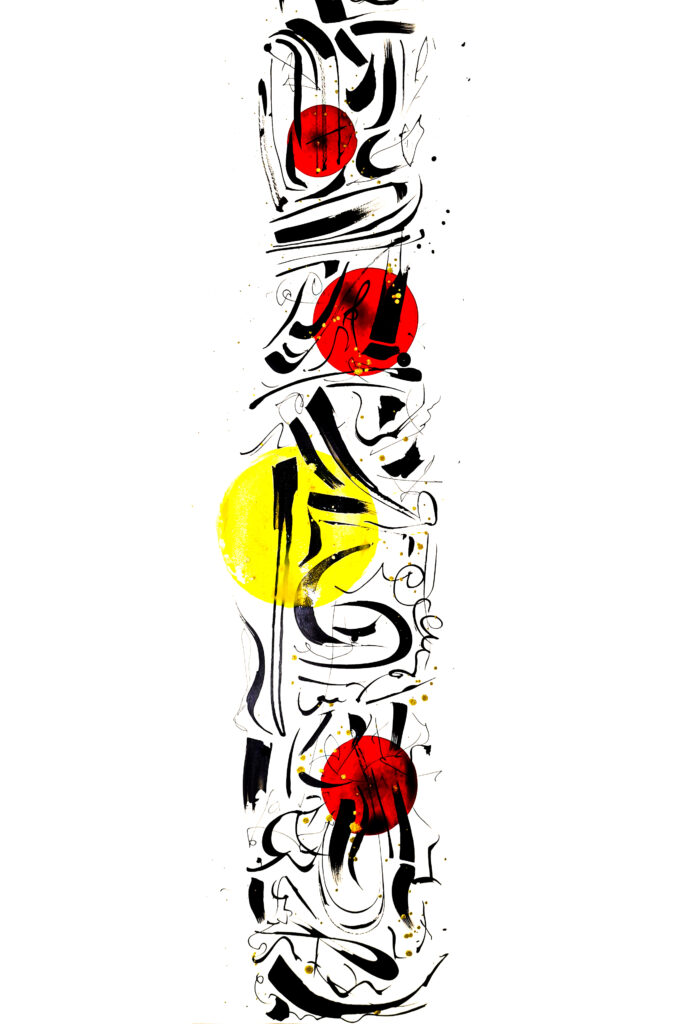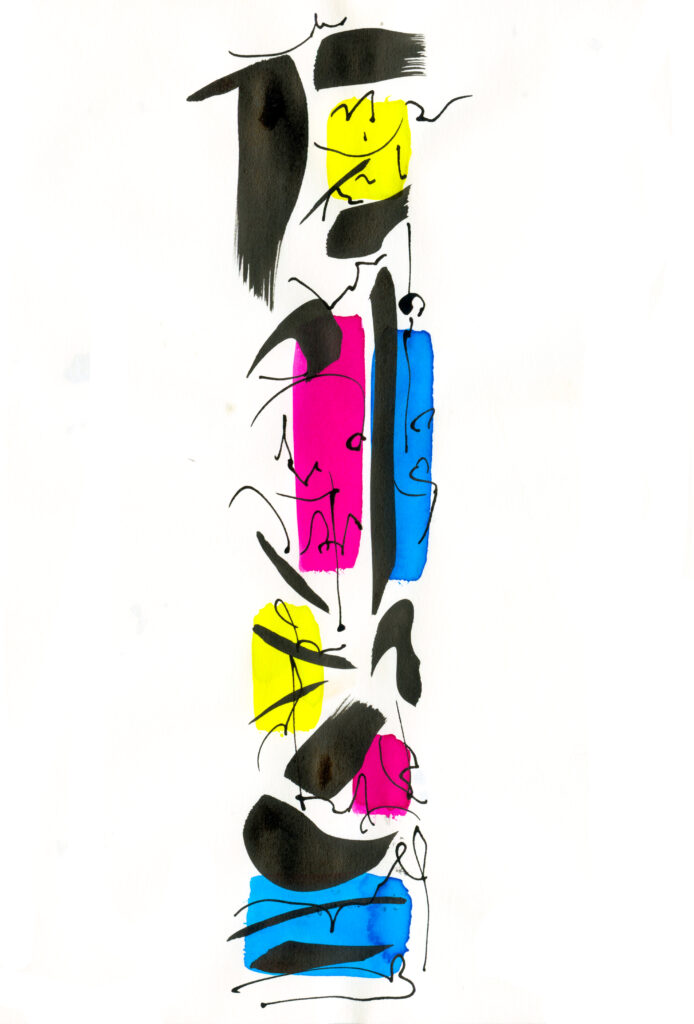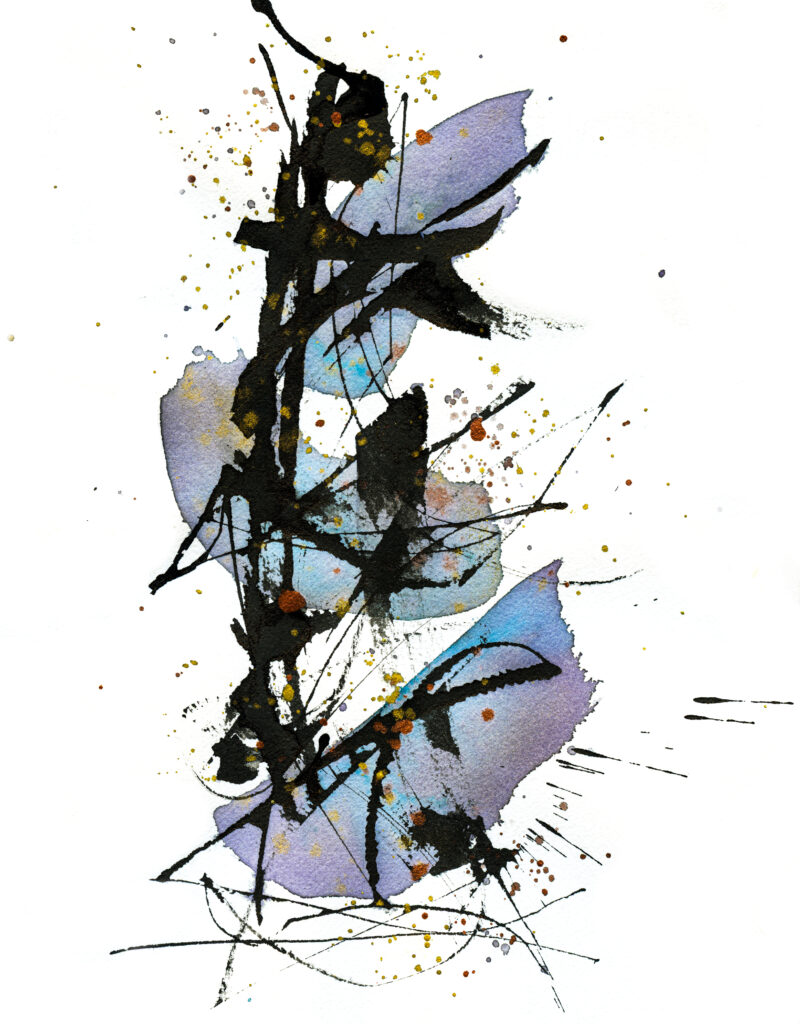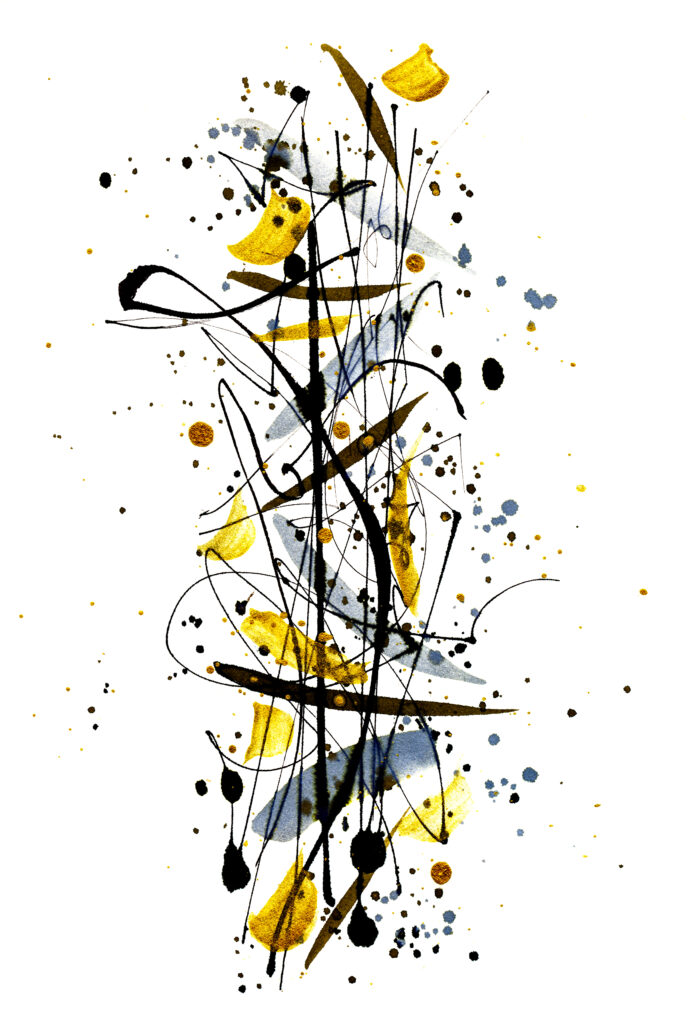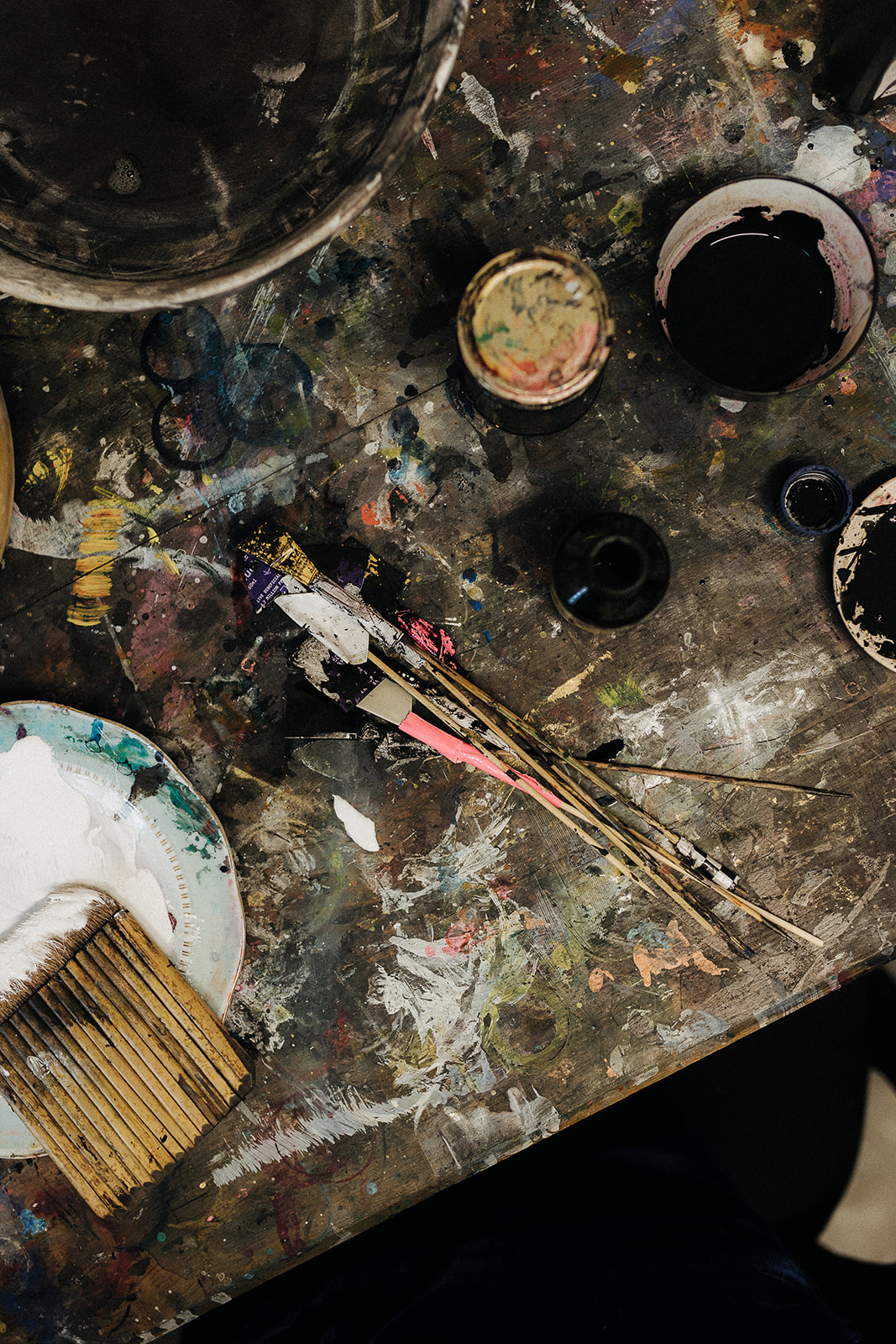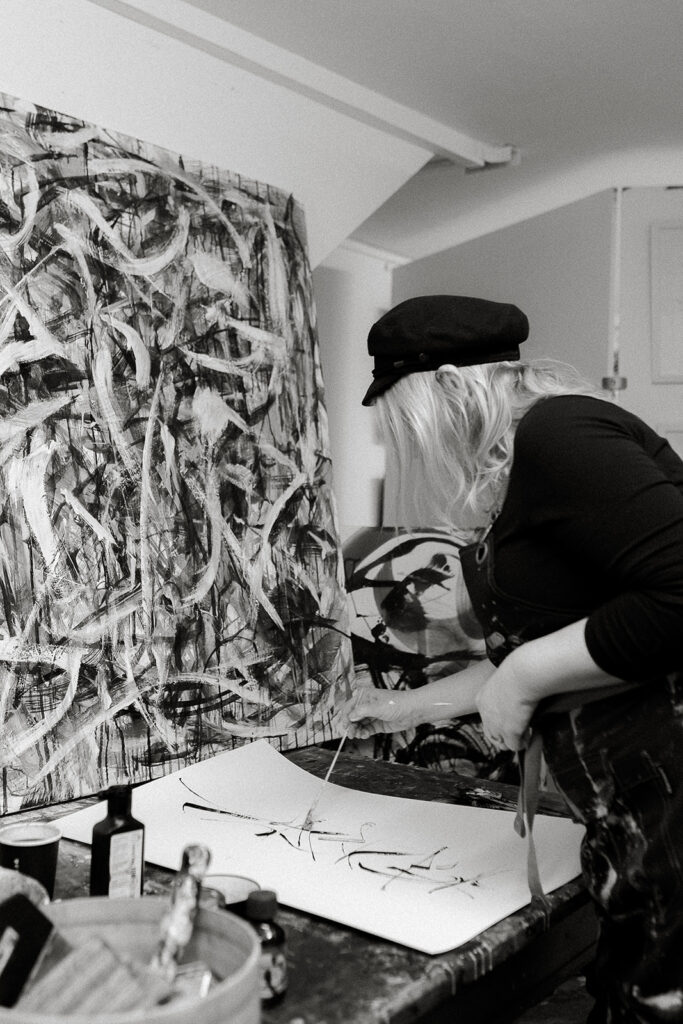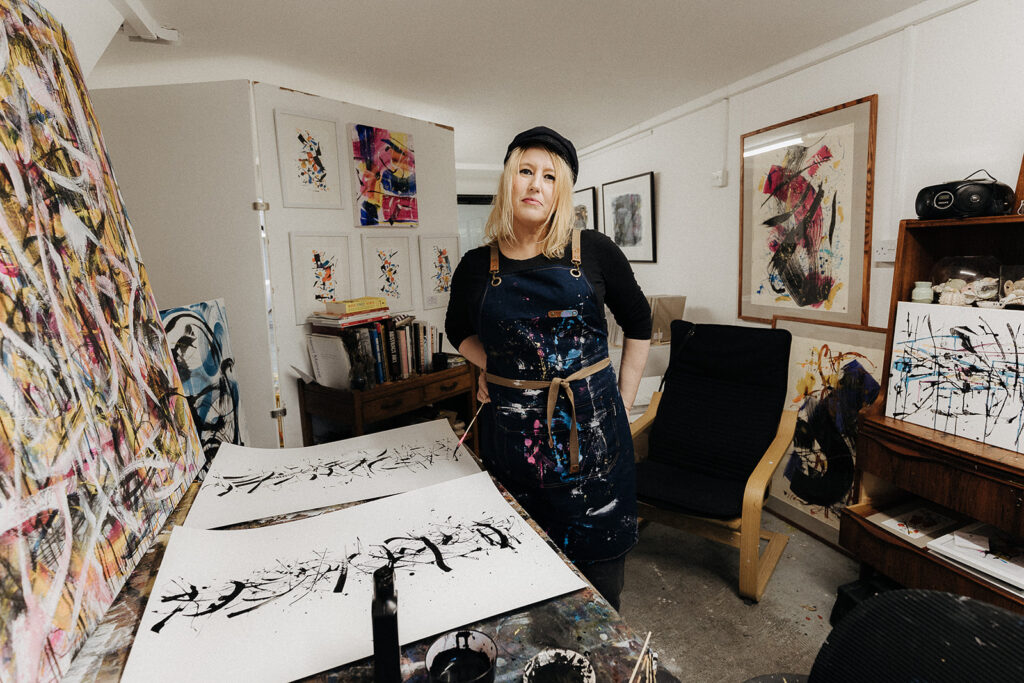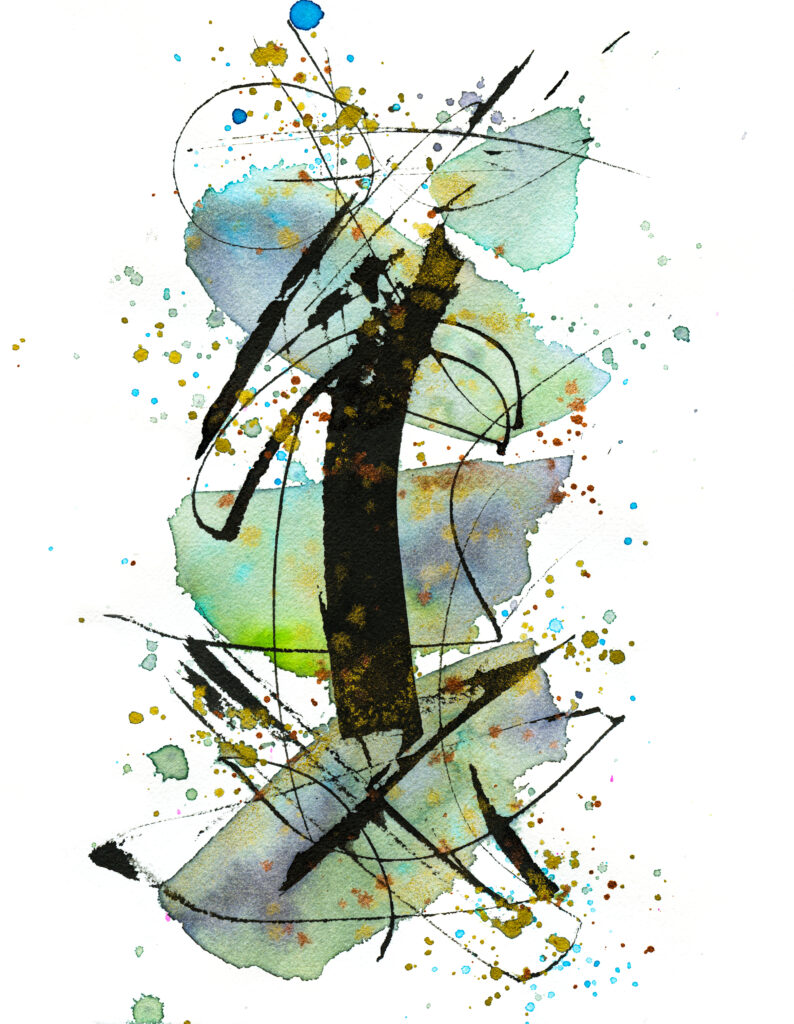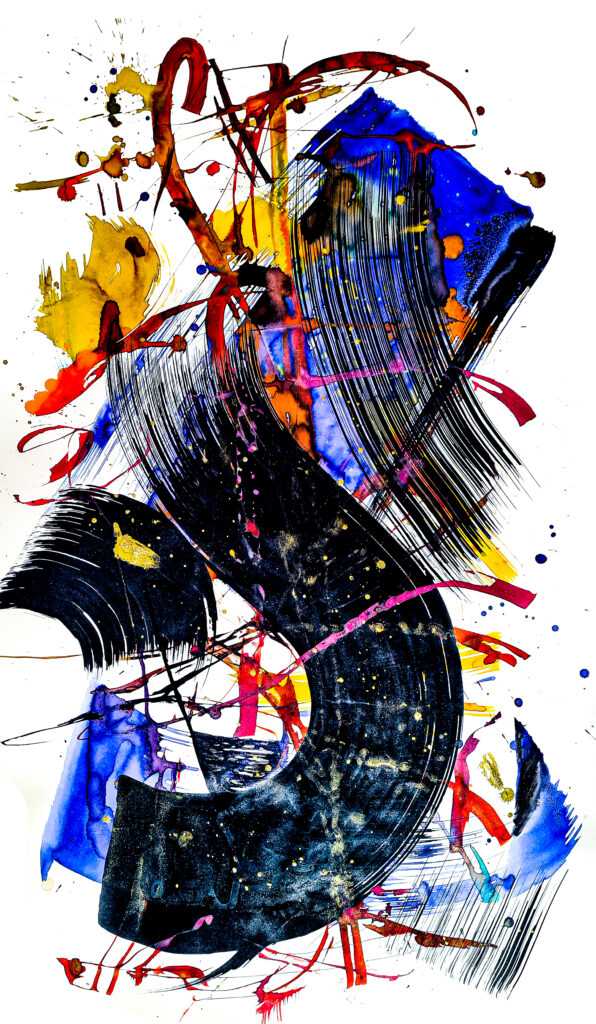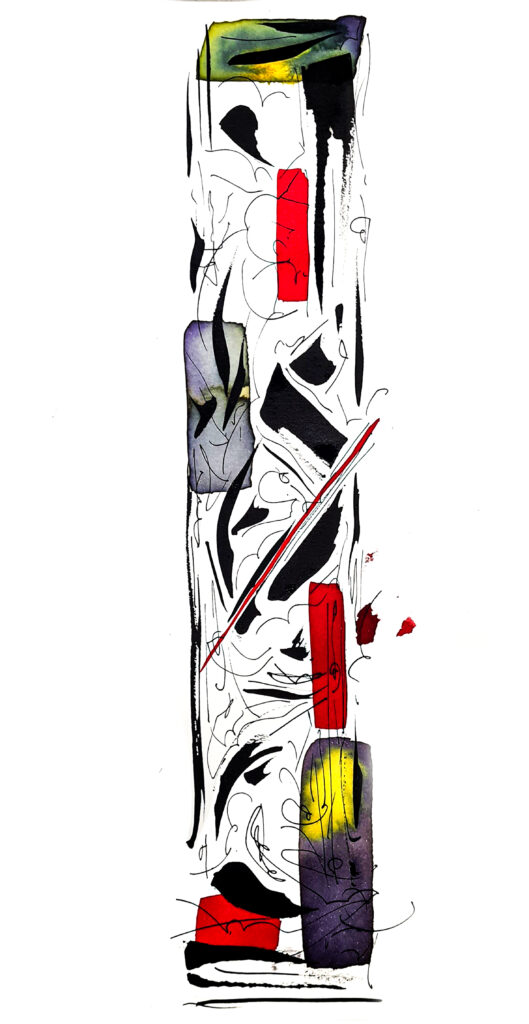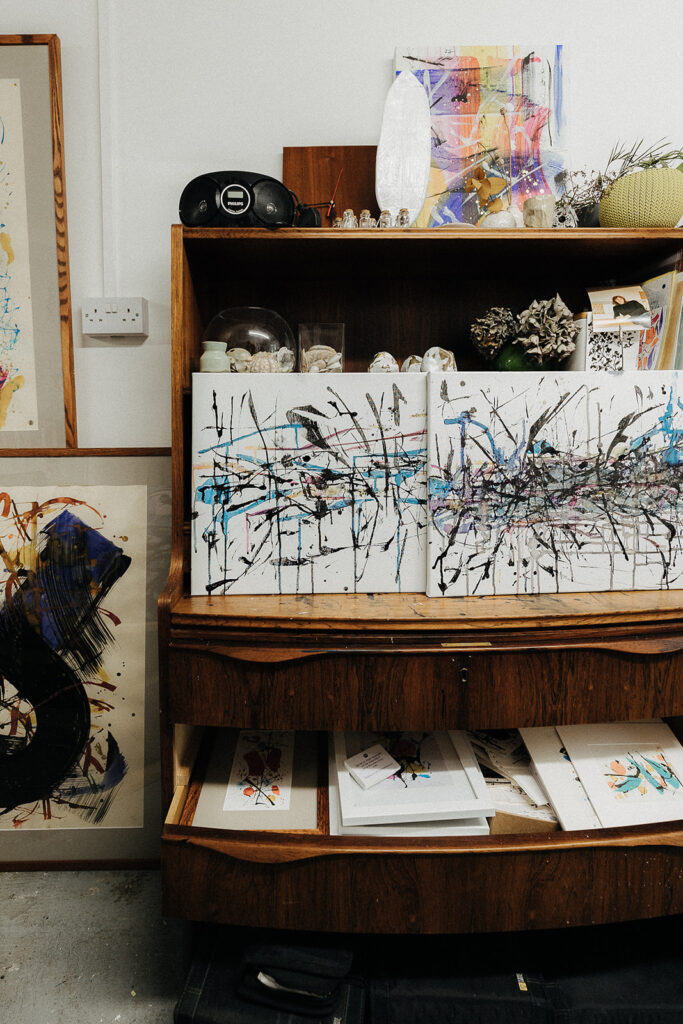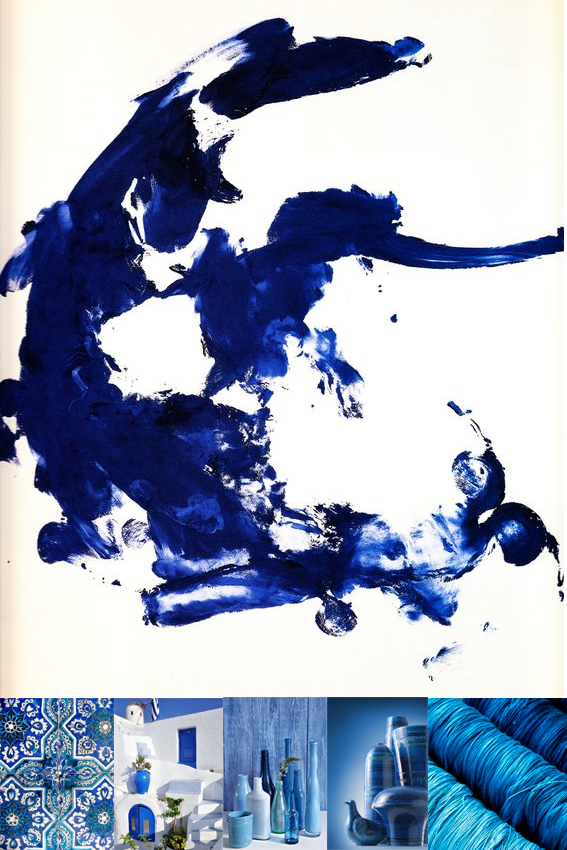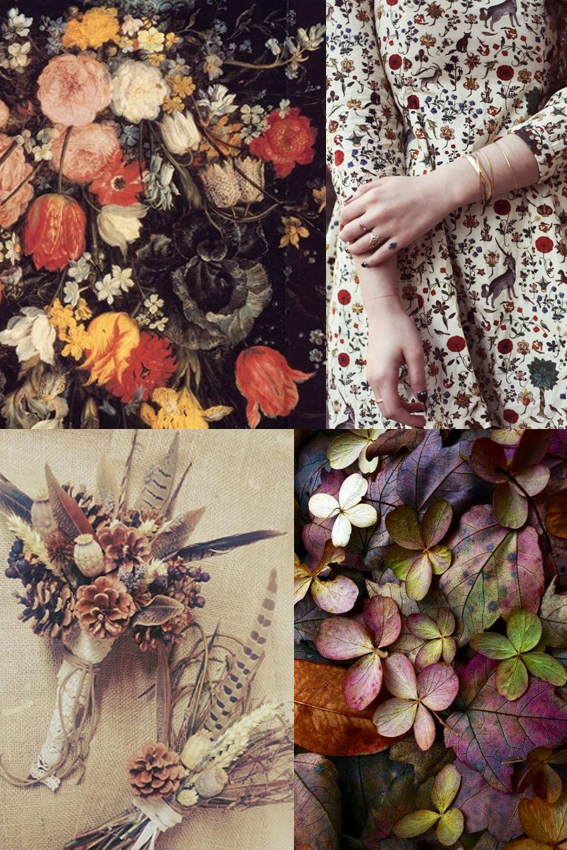Wordless text and mark making

My current work is an exploration of mark making. The marks are a kind of text. Some of the pieces are specifically asemic. They are an exploration of the types of marks I make when writing.
This is actually very personal. Because of the way I held my pen when I was a kid, I was bullied by a teacher for my writing. Ever since then I’ve been strongly protective over my writing and my mark making. And it’s something that I’ve needed to explore. It’s something that I’ve had to think about from an early age – the marks I was making and how I was making them.
It’s quite a psychological thing for me. I like my writing. People comment on my handwriting. What is ‘my own hand’? What is it to play and experiment with that? Asemic poetry really interests me because it’s about making marks and enjoying these marks without actually writing a text that people can immediately read. But the visual language of handwriting can be found within my own artistic practice. I also once I had my handwriting studied by a graphologist. She noticed all the flourishes and was alarmingly accurate with her analysis. Regardless of what words you write, the marks you make give the game away. I employ all of my handwriting and gestural mark-making in the pieces.
The pieces are definitely wordless texts and there’s a dialogue between the different marks. But they’re also simply about being in the moment when the artwork is created. I might have my reflections or even a particular agenda, and it’s also in some ways a projection of the future, but really it’s simply about the moment, the now, in which the artwork is made. I don’t want to impose my own narrative. The question is just about what it means to make a mark, and to make those marks on the paper.
With different papers you get different reactions. I love the experiment of paper. The surface is as important as the ink or the paint. A cheap watercolour paper, made without bleach so it’s greyish in tone, produces a certain effect. Some papers absorb liquid too much, some resist it. A washi inkjet paper and a fine washi rice paper give different results. Some absorb the ink very quickly, some completely blot it.
With a very fine paper, you’ve got to be careful if you want a solid line. You’ve got to be light, like you’re barely touching the paper, because if you apply any kind of pressure or wetness, it’s going to suck it up. It’s really delicate. Or you might use a good quality, heavy paper, and they’re so dense, but they hold colour so well that you’re challenged to be decisive in the marks that you make. On some papers the black ink buckles the paper, it sits and stays shiny on it, raised in relief. Some papers can look so frail against this force of the black. You have to work with that. You’ve got to work with the ink and the paper as equally important components.
